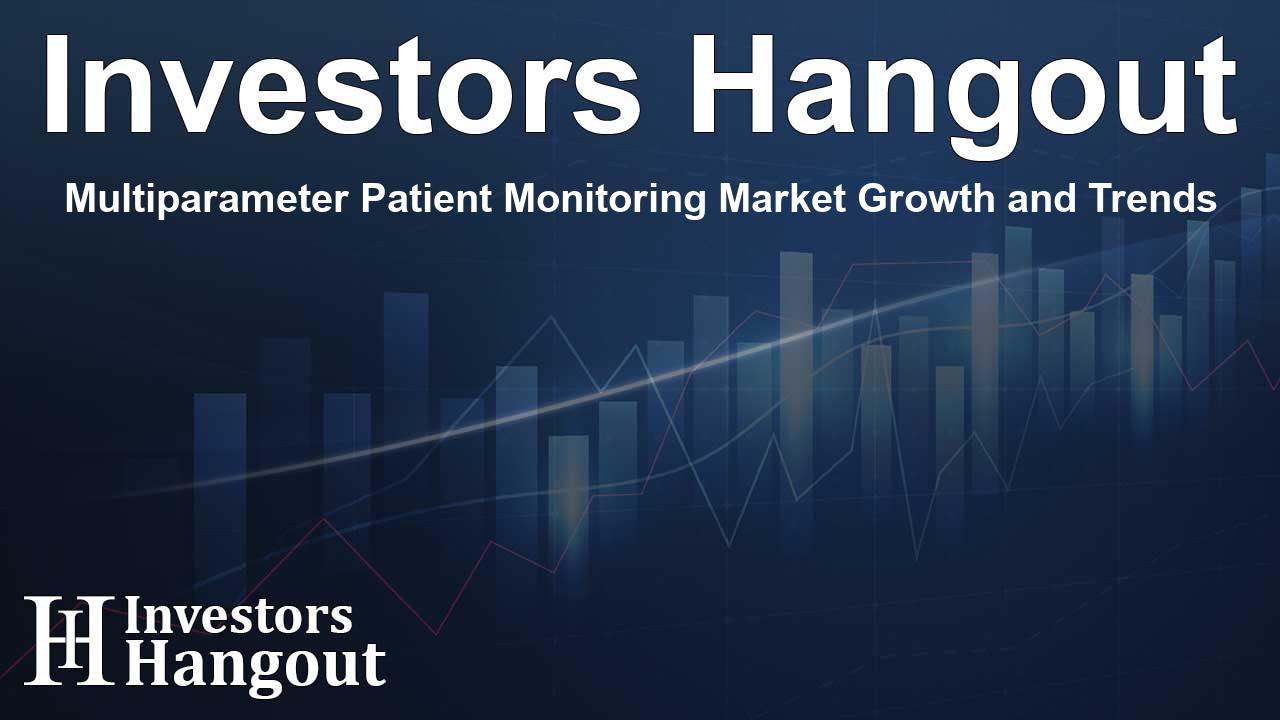Multiparameter Patient Monitoring Market Growth and Trends

Overview of the Multiparameter Patient Monitoring Market
The multiparameter patient monitoring market is experiencing notable growth, projected to rise from USD 12.83 billion in 2024 to USD 22.19 billion by 2034. This growth represents a compound annual growth rate (CAGR) of 5.6% from 2025 to 2034, signals a robust demand for advanced monitoring technologies in the healthcare sector.
What is Multiparameter Patient Monitoring?
Multiparameter patient monitoring refers to the continuous observation of vital signs such as blood pressure, oxygen saturation, heart rate, temperature, and ECG readings. These sophisticated systems facilitate critical patient care by integrating features like alarms, wireless data transmission, and even built-in defibrillators to respond swiftly during emergencies. With the rising incidence of critical conditions requiring intensive monitoring, the demand for multiparameter systems is at an all-time high.
Benefits of Multiparameter Monitoring Systems
The adoption of multiparameter monitoring systems enhances patient care by streamlining the monitoring process in various medical settings, including hospitals, emergency rooms, and intensive care units (ICUs). The systems enable immediate identification and reaction to critical health changes, thereby improving patient outcomes. As healthcare providers seek innovative solutions to cater to the rising number of patients, multiparameter monitoring technologies become increasingly essential.
Key Drivers of Market Expansion
1. The Surge in Healthcare Investment
Investment in healthcare infrastructure has risen significantly, aimed at enhancing the quality of patient care. Such investments ensure access to advanced healthcare technologies, from urban centers to remote areas. Enhanced training and capacity-building initiatives also empower healthcare professionals to effectively utilize multiparameter monitoring systems.
2. Rise in Home Healthcare Needs
The growing trend of home healthcare has led to an upsurge in demand for remote monitoring solutions. Patients managing chronic conditions or recovering from hospitalization are increasingly relying on multiparameter monitoring devices to maintain their health outside traditional clinical environments. This shift in care delivery models positively impacts market expansion.
3. Innovation in Wearable Technology
Advancements in wearable multiparameter monitors have expanded consumer access to vital sign tracking outside traditional healthcare facilities. This technology allows users to monitor their health metrics conveniently, thus driving the growth of the multiparameter patient monitoring market.
Geographical Insights
North America: The Leading Region
Currently, North America dominates the multiparameter patient monitoring market, driven by its established healthcare infrastructure and high prevalence of chronic health conditions. Continuous innovations by key market players ensure that this region remains at the forefront of the industry.
Asia Pacific: Future Growth Driver
The Asia Pacific region is projected to witness the fastest market growth from 2025 to 2034. The rapid development of healthcare infrastructure in key countries, like India and China, combined with a growing patient population and urbanization, positions this region as a lucrative market for multiparameter patient monitoring.
Market Segmentation Overview
The multiparameter patient monitoring market can be segmented based on various factors:
Device Type
- Portable Monitors
- Fixed Monitors
Acuity Level
- High Acuity
- Medium Acuity
- Low Acuity
Age Group
- Pediatric
- Adult
- Geriatric
End-Use Settings
- Hospitals
- Homecare
- Ambulatory Surgical Centers
- Other Settings
Conclusion and Future Prospects
The multiparameter patient monitoring market is poised for substantial growth, fueled by technological innovations and the increasing demand for sophisticated healthcare solutions. As market players continue to innovate, the potential for growth remains high in both established and emerging markets.
Frequently Asked Questions
What is the estimated market value of multiparameter patient monitoring by 2034?
The market is projected to reach USD 22.19 billion by 2034.
What factors are driving the growth of this market?
The growth is driven by increased healthcare investments, the rise of home healthcare, and innovation in wearable monitoring technologies.
Which region currently leads the multiparameter patient monitoring market?
North America currently dominates the market, followed by rapid growth expected in the Asia Pacific region.
What types of devices are included in the multiparameter patient monitoring market?
The market includes both portable and fixed monitoring devices used in various healthcare settings.
How do multiparameter monitoring systems improve patient care?
These systems enable continuous monitoring and quick responses to changes in a patient's vital signs, enhancing overall patient outcomes.
About The Author
Contact Kelly Martin privately here. Or send an email with ATTN: Kelly Martin as the subject to contact@investorshangout.com.
About Investors Hangout
Investors Hangout is a leading online stock forum for financial discussion and learning, offering a wide range of free tools and resources. It draws in traders of all levels, who exchange market knowledge, investigate trading tactics, and keep an eye on industry developments in real time. Featuring financial articles, stock message boards, quotes, charts, company profiles, and live news updates. Through cooperative learning and a wealth of informational resources, it helps users from novices creating their first portfolios to experts honing their techniques. Join Investors Hangout today: https://investorshangout.com/
The content of this article is based on factual, publicly available information and does not represent legal, financial, or investment advice. Investors Hangout does not offer financial advice, and the author is not a licensed financial advisor. Consult a qualified advisor before making any financial or investment decisions based on this article. This article should not be considered advice to purchase, sell, or hold any securities or other investments. If any of the material provided here is inaccurate, please contact us for corrections.
